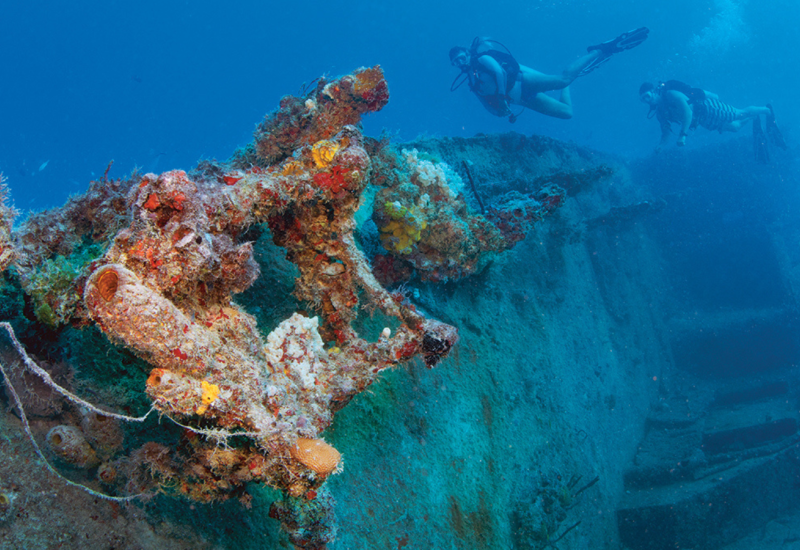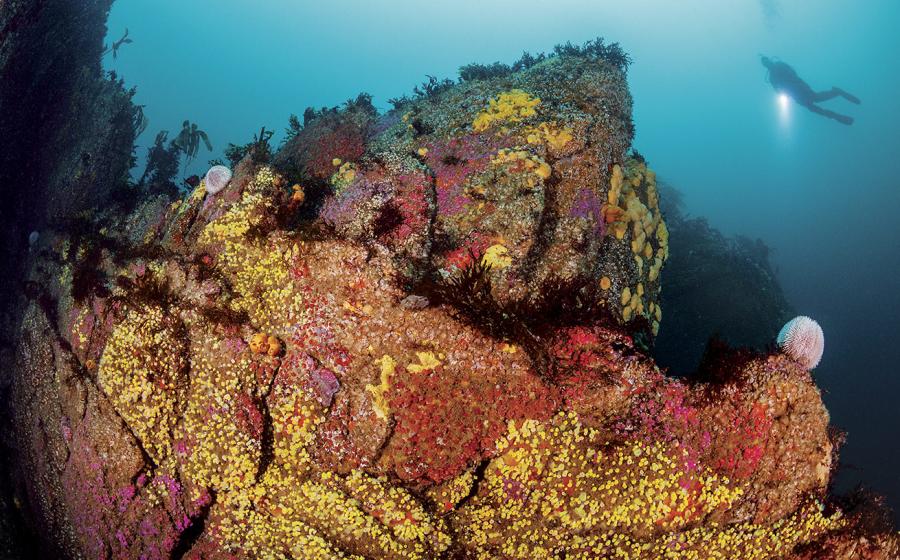Florida Keys Gearbag Checklist
| > Gearbag Checklist: What to Take to the Florida Keys |  |

To make this list of diving equipment as beneficial as possible, items are grouped into categories based upon their importance and use on a vacation. These categories are:
-
Need to Have - Don't leave home without it.
-
Can Save Your Trip - You won't take these items in the water, but they can make or break the trip.
-
Nice to Have - If you need to pack light, it's best to leave these items at home.
-
Don't Bother - Leave this stuff at home.
Category #1 - Need to Have
Mask - This piece of diving equipment is so important, you should pack it in your carry-on bag.
Snorkel - Some divers do not like to use snorkels when they scuba dive, but warm-water areas often provide some great places to snorkel.
Fins - Though it's possible to rent fins in most destinations, it's a good idea to bring your own.
Exposure Suit - You'll want to wear a full wetsuit in winter, and at least a skin or shorty the rest of the year. The temps are typical for this part of the Caribbean: mid- 70Fs in winter, mid 80Fs in summer. The exposure suit you decide to pack depends on the season and your susceptibility to the cold. But exposure suits do more than keep you warm. The right suit can help prevent sunburn, scrapes, cuts, and minor stings. Some operators rent wetsuits, but don't count on it.
Buoyancy Compensator (BC) - Check with the dive operator before you go to see if you'll be able to rent a BC. If your budget can handle it, purchase a BC and make sure it fits you well.
Regulator - Your regulator is an important piece of personal diving equipment--and often the most expensive. Many resorts have regulators available for rental, but they may not offer the same features or be as comfortable as your own. Pack your reg in your carry-on bag, if possible.
Dive Computer - Most divers wouldn't think of diving without one, and it's now common practice for operators to require their use. Carry your computer on the plane with you.
Underwater Light with Lanyard - Even if you do not plan to night dive, a light source at depth can bring out the intense colors found on the reefs. A compact light with disposable batteries works well for most resort dives.
Signaling Device - A whistle, inflatable tube or other attention-getting device is a must, especially if you plan to do any drift diving.
Certification Card - Absolutely, positively necessary!
Log Book - As important as your certification card. Some dive operations require you to show logged experience at certain types of dives before you are allowed to make specific dives.
Swimsuit - Pack it in your carry-on.
Sunscreen - Tropical sun, reflected glare and white, sandy beaches are a deadly combination for fair complexions. A sunscreen with an SPF of 15 or higher is recommended. Select a type that does not wash off easily in water or opt for an environmentally safe lotion that contains only natural, organic ingredients.
Dive Bag - For traveling, a large, heavy-duty bag is best. Many experienced dive travelers swear by backpack-type bags. The bag should be tagged for easy identification. Unfortunately, current airline regulations do not permit locking your dive gear bag.
Category #2 - Can Save Your Trip
First-Aid Kit - Even if the dive operator has one available, keeping your personal kit handy can be valuable in emergency situations.
Spare Parts and Tool Kit - Last-minute equipment repairs or adjustments always seem needed. Having the parts and tools handy gets you in the water with a minimum of lost time.
Replacement Batteries - If possible, pack enough batteries for your light or other electronic devices. Carrying these batteries, however,can be a nuisance. Batteries for most lights are available at popular resort areas but may be quite expensive. If your dive computer requires a special battery, buy an extra and include it in your Save-A-Dive Kit. A word of caution about dive computer batteries: The battery in some computers can only be changed by a trained technician, or you risk voiding the warranty. Check with your local retail dive center for details.
Film - If you plan on taking pictures and you're not shooting digital, you may want to pack film to spare. You can always bring home anything you don't use and it beats using valuable vacation time to find more if the need arises.
A/C Charger - If you take a rechargeable light or strobe, you will need a charger.
Back-Up Light with Lanyard - Take a light that is small enough to fit into your BC pocket. A small light is handy for peeking into holes and crevices, even during the day.
Hood - It's possible to get chilled after several dives even in warm water. Wearing a lightweight neoprene hood will help you conserve a considerable amount of body heat.
Spare Weight Belt (no weights) - Weights are easy to find, but sometimes an operator is short on belts.
Category #3 - Nice to Have
Booties - May be used for warmth, traction and to protect your feet from your fins and the environment.
Gloves - A touchy subject. Some resort operators will not let divers use gloves at all. The reasoning is that an unprotected hand is less likely to be placed on the coral. Check with your dive operator.
Knife or Diver's Tool - Check with the dive operator for its policy on dive knives. Keep in mind that you'll have to pack a dive knife in your checked baggage, which now must be unlocked, and a dive knife is likely to invite inspection by airline security.
Spare Regulator - Some operations do not have spare equipment or repair services available.
Towel - Drying off after a dive can keep away the chill that can happen even in tropical locales. Some resorts do not allow the use of room towels for diving or around the swimming pool.
Underwater Communication Slate with Pencil - Very handy for photographers who want to record exposure settings or for taking notes on new marine life you see.
Fish Identification Cards - Available at many resorts, these cards have color illustrations of common fish species found in that area. Also check with your local retail dive center.
Underwater Camera - Capturing pictures under water adds a whole new dimension to diving, plus it's a great way to share your experiences with non-diving family and friends.
Cap or Hat - Even in tropical climates, you can easily get chilled after a full day of diving. A cap or hat will help conserve your body heat,keep the sun off your head and packs easily away into your dive bag.
Windbreaker or Foul-Weather Jacket - Wind chill can cause a wet diver to become miserable during the boat ride back to the dock. A lightweight windbreaker keeps the wind off and can keep you dry during a tropical downpour.
Smaller Gear Bag - After you arrive, store the large travel bag and carry your dive equipment around in a duffel or backpack. Mesh bags are lighter, dry quicker and will help your equipment dry between uses. When empty, it folds up, taking almost no room, which is nice on full boats where space is at a premium. But get one with at least one waterproof pocket.
Dry Bag - Used to keep your clothes and other personal items dry or separate wet and dry items in your dive bag.
Bungee Cords (2) - Used to strap your dive bag to the boat rail or under the seat.
Category #4 - Don't Bother
Scuba Cylinder - Heavy, bulky, and most airlines will require you to drain all the air out before checking it through. All dive resorts have tanks for their guests.
Lead Weight - Too heavy to make it practical to carry. Some divers carry a pair of ankle weights that weigh about 11/2 pounds each. The dive operator will have plenty of weight for you to use.
|||| |---|---|---|
|<
table>
 |
|

To make this list of diving equipment as beneficial as possible, items are grouped into categories based upon their importance and use on a vacation. These categories are:
Need to Have - Don't leave home without it.
Can Save Your Trip - You won't take these items in the water, but they can make or break the trip.
Nice to Have - If you need to pack light, it's best to leave these items at home.
Don't Bother - Leave this stuff at home.
Category #1 - Need to Have
Mask - This piece of diving equipment is so important, you should pack it in your carry-on bag.
Snorkel - Some divers do not like to use snorkels when they scuba dive, but warm-water areas often provide some great places to snorkel.
Fins - Though it's possible to rent fins in most destinations, it's a good idea to bring your own.
Exposure Suit - You'll want to wear a full wetsuit in winter, and at least a skin or shorty the rest of the year. The temps are typical for this part of the Caribbean: mid- 70Fs in winter, mid 80Fs in summer. The exposure suit you decide to pack depends on the season and your susceptibility to the cold. But exposure suits do more than keep you warm. The right suit can help prevent sunburn, scrapes, cuts, and minor stings. Some operators rent wetsuits, but don't count on it.
Buoyancy Compensator (BC) - Check with the dive operator before you go to see if you'll be able to rent a BC. If your budget can handle it, purchase a BC and make sure it fits you well.
Regulator - Your regulator is an important piece of personal diving equipment--and often the most expensive. Many resorts have regulators available for rental, but they may not offer the same features or be as comfortable as your own. Pack your reg in your carry-on bag, if possible.
Dive Computer - Most divers wouldn't think of diving without one, and it's now common practice for operators to require their use. Carry your computer on the plane with you.
Underwater Light with Lanyard - Even if you do not plan to night dive, a light source at depth can bring out the intense colors found on the reefs. A compact light with disposable batteries works well for most resort dives.
Signaling Device - A whistle, inflatable tube or other attention-getting device is a must, especially if you plan to do any drift diving.
Certification Card - Absolutely, positively necessary!
Log Book - As important as your certification card. Some dive operations require you to show logged experience at certain types of dives before you are allowed to make specific dives.
Swimsuit - Pack it in your carry-on.
Sunscreen - Tropical sun, reflected glare and white, sandy beaches are a deadly combination for fair complexions. A sunscreen with an SPF of 15 or higher is recommended. Select a type that does not wash off easily in water or opt for an environmentally safe lotion that contains only natural, organic ingredients.
Dive Bag - For traveling, a large, heavy-duty bag is best. Many experienced dive travelers swear by backpack-type bags. The bag should be tagged for easy identification. Unfortunately, current airline regulations do not permit locking your dive gear bag.
Category #2 - Can Save Your Trip
First-Aid Kit - Even if the dive operator has one available, keeping your personal kit handy can be valuable in emergency situations.
Spare Parts and Tool Kit - Last-minute equipment repairs or adjustments always seem needed. Having the parts and tools handy gets you in the water with a minimum of lost time.
Replacement Batteries - If possible, pack enough batteries for your light or other electronic devices. Carrying these batteries, however,can be a nuisance. Batteries for most lights are available at popular resort areas but may be quite expensive. If your dive computer requires a special battery, buy an extra and include it in your Save-A-Dive Kit. A word of caution about dive computer batteries: The battery in some computers can only be changed by a trained technician, or you risk voiding the warranty. Check with your local retail dive center for details.
Film - If you plan on taking pictures and you're not shooting digital, you may want to pack film to spare. You can always bring home anything you don't use and it beats using valuable vacation time to find more if the need arises.
A/C Charger - If you take a rechargeable light or strobe, you will need a charger.
Back-Up Light with Lanyard - Take a light that is small enough to fit into your BC pocket. A small light is handy for peeking into holes and crevices, even during the day.
Hood - It's possible to get chilled after several dives even in warm water. Wearing a lightweight neoprene hood will help you conserve a considerable amount of body heat.
Spare Weight Belt (no weights) - Weights are easy to find, but sometimes an operator is short on belts.
Category #3 - Nice to Have
Booties - May be used for warmth, traction and to protect your feet from your fins and the environment.
Gloves - A touchy subject. Some resort operators will not let divers use gloves at all. The reasoning is that an unprotected hand is less likely to be placed on the coral. Check with your dive operator.
Knife or Diver's Tool - Check with the dive operator for its policy on dive knives. Keep in mind that you'll have to pack a dive knife in your checked baggage, which now must be unlocked, and a dive knife is likely to invite inspection by airline security.
Spare Regulator - Some operations do not have spare equipment or repair services available.
Towel - Drying off after a dive can keep away the chill that can happen even in tropical locales. Some resorts do not allow the use of room towels for diving or around the swimming pool.
Underwater Communication Slate with Pencil - Very handy for photographers who want to record exposure settings or for taking notes on new marine life you see.
Fish Identification Cards - Available at many resorts, these cards have color illustrations of common fish species found in that area. Also check with your local retail dive center.
Underwater Camera - Capturing pictures under water adds a whole new dimension to diving, plus it's a great way to share your experiences with non-diving family and friends.
Cap or Hat - Even in tropical climates, you can easily get chilled after a full day of diving. A cap or hat will help conserve your body heat,keep the sun off your head and packs easily away into your dive bag.
Windbreaker or Foul-Weather Jacket - Wind chill can cause a wet diver to become miserable during the boat ride back to the dock. A lightweight windbreaker keeps the wind off and can keep you dry during a tropical downpour.
Smaller Gear Bag - After you arrive, store the large travel bag and carry your dive equipment around in a duffel or backpack. Mesh bags are lighter, dry quicker and will help your equipment dry between uses. When empty, it folds up, taking almost no room, which is nice on full boats where space is at a premium. But get one with at least one waterproof pocket.
Dry Bag - Used to keep your clothes and other personal items dry or separate wet and dry items in your dive bag.
Bungee Cords (2) - Used to strap your dive bag to the boat rail or under the seat.
Category #4 - Don't Bother
Scuba Cylinder - Heavy, bulky, and most airlines will require you to drain all the air out before checking it through. All dive resorts have tanks for their guests.
Lead Weight - Too heavy to make it practical to carry. Some divers carry a pair of ankle weights that weigh about 11/2 pounds each. The dive operator will have plenty of weight for you to use.









